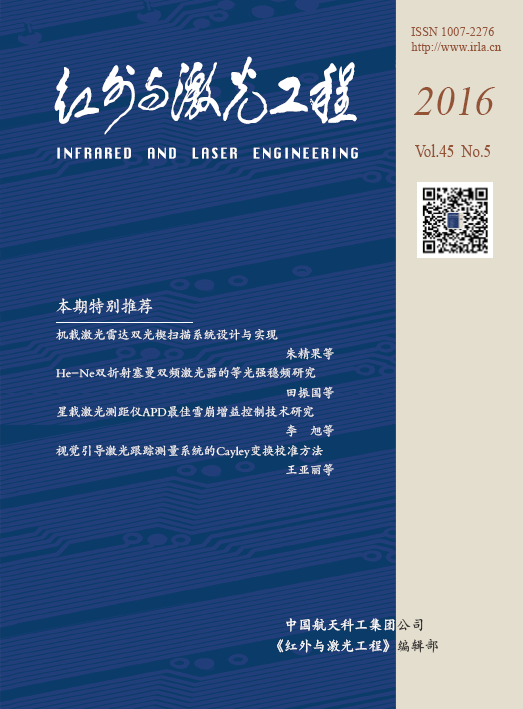一体化Y型腔正交偏振氦氖激光器的温度场仿真与实验
[1] Xiao Guangzong, Long Xingwu, Zhang Bin. A novel orthogonal polarized dual-frequency laser using a Y-shaped cavity[J]. Optics & Laser Technology, 2011, 43(7): 1314-1317.
[2] Xiao Guangzong, Long Xingwu, Zhang Bin, et al. A novel active optical pproach for acceleration measurement based on a Y-shaped cavity dual-frequency laser[J]. Optics & Laser Technology, 2012, 44(2): 344-348.
[4] Wang Xin, Xiao Guangzong, Xie Yuanping. Compound-cavity and its application in laser technology[J]. Laser and Infrared, 2013, 43(3): 240-243. (in Chinese)
[5] Xiao Guangzong. Preliminary study on laser accelerometer based on Y-shaped cavity orthogonal polarized laser[D]. Changsha: National University of Defense Technology, 2011. (in Chinese)
[7] Wang Wen, Gao Xin, Zhou Zepeng, et al. Steady-state thermal analysis of hundred-watt semiconductor laser with multichip-packaging[J]. Infrared and Laser Engineering, 2014, 43(5): 1438-1443. (in Chinese)
[8] Lan Peifeng, Liu Yuanzheng, Wang Jiliang, et al. Research on thermal performance for resonator of mechanically dithered ring laser gyroscopes[J]. Laser and Optoelectronics Progress, 2014, 51(5): 051405. (in Chinese)
[9] Hu Renxi, Zhang Xiuhui. ANSYS 14 Thermodynamics/Electromagnetic/Coupled Field Analysis SSP[M]. Beijing: Posts and Telecom Press, 2013. (in Chinese)
[12] Han Yaofeng, Zhang Ruofan, Yang Hongru, et, al. Time-variable thermal effect in side-pump high power pulsed Nd: YAG laser[J]. High Power Laser and Particle Beams, 2015, 27(6): 27061005. (in Chinese)
[13] Pu G Y. ANSYS Workbench Based Tutorial and Example Explanation(Second edition)[M]. Beijing: China Water & Power Press, 2013. (in Chinese)
[14] Yang Shiming, Tao Wenquan. Heat Transfer[M]. Beijing: Higher Education Press, 2006. (in Chinese)
龚梦帆, 肖光宗, 于旭东, 张斌. 一体化Y型腔正交偏振氦氖激光器的温度场仿真与实验[J]. 红外与激光工程, 2016, 45(5): 0505002. Gong Mengfan, Xiao Guangzong, Yu Xudong, Zhang Bin. Temperature field simulation and experimental of orthogonal polarized He-Ne laser with integrated Y-shaped cavity[J]. Infrared and Laser Engineering, 2016, 45(5): 0505002.



